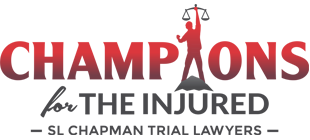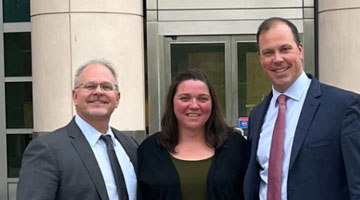Who Pays In Wildlife Collisions?
Posted on August 25, 2025Drivers in both rural and suburban areas often encounter animals on the road. While swerving to avoid a deer or hitting a wild animal may seem like bad luck, there can be real legal and financial consequences. As a car accident lawyer can share, wildlife collisions can cause significant property damage, physical injury, and even multi-vehicle crashes. Determining who or if anyone is liable depends on a range of factors.
When No One Is At Fault
In many cases, wildlife collisions are classified as no-fault incidents. If a driver strikes a deer that darts into the road with no time to react, insurance typically handles the claim without pointing to negligence. This usually falls under comprehensive coverage rather than collision insurance. However, if the driver swerves to avoid the animal and hits another vehicle or fixed object, fault may come into play.
Insurance companies may still cover damages, but drivers might face rate increases or deductibles. It’s important to document the incident thoroughly with photos, police reports, and witness statements that can support a smoother claims process. Some insurers dispute whether damage resulted directly from the animal or from driver actions, which can complicate recovery.
A lawyer can guide you through this process so you don’t have to worry about your insurance pushing back on the claim.
Liability For Poor Road Conditions Or Inadequate Signage
In certain scenarios, government entities or private property owners may share responsibility. For example, if a wildlife crossing is known to pose frequent danger and no warning signs are posted, the agency responsible for the road might be partially liable. This is particularly relevant in areas with high rates of animal crossings during migration or seasonal changes.
According to our friends at The Layton Law Firm, these cases require strong documentation and often rely on historical data showing a pattern of similar incidents. Proving that a municipality ignored known risks is challenging but possible, especially when public safety measures could have mitigated the hazard. Lawyers may investigate whether prior accidents were reported at the same location and whether agencies failed to act. Legal teams will look through incident reports to see if signs were documented as missing or if the area is a known trouble spot.
Wildlife Collisions Involving Commercial Trucks
When a commercial truck is involved in a wildlife-related crash, the outcome can be more severe due to vehicle size and load weight. A truck accident lawyer may need to investigate not only the collision but also the truck’s speed, braking system, and whether proper defensive driving protocols were followed.
In some cases, if the trucking company failed to provide appropriate training or the driver had a poor safety record, liability could extend beyond the incident itself. Commercial insurers are more likely to contest fault, making legal representation critical in these situations. Data such as dash cam recordings, electronic logging devices, and brake inspection records can provide valuable evidence. Lawyers can use this information to show you were not speeding, for example.
State Laws And Preventive Measures
Wildlife collision claims can also be influenced by state law. Some states follow comparative negligence rules, meaning damages may be reduced if the injured driver is found partially at fault for overcorrecting or speeding. Other states place stricter liability on property owners if unsafe fencing or roadway maintenance contributed to the accident.
Drivers can also take preventive measures that may impact legal outcomes. Using high beams in rural areas, reducing speed at night, and staying alert during peak migration seasons can all reduce risk. If a case goes to court, evidence of safe driving habits may help strengthen a claim by showing the driver acted reasonably under the circumstances.
Collisions with wildlife aren’t always random acts of nature, sometimes infrastructure, training, or oversight plays a role. Speak with a local attorney to learn more.


